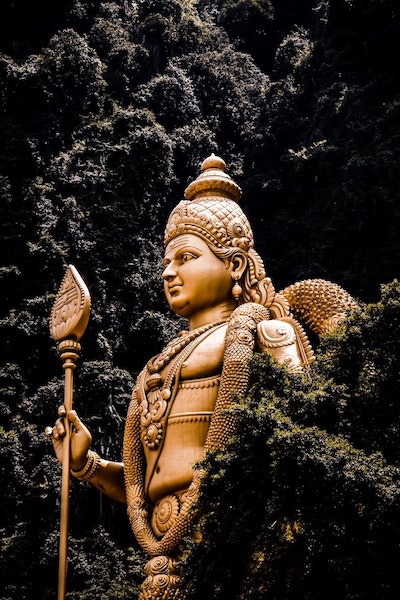This site uses cookies to enhance user experience including providing some third-party features such as comments and allowing readers to subscribe to our blog. If you choose to reject cookies, some of these features will not function correctly.
Kavadi
HISTORY
The Kavadi ritual originated with the Tamil Hindus. We honour its origins as such and its purpose, which is to help bring communities together to bring goodness to ourselves and others as well as rid of anything no longer needed.
Kavadi means “to bear weight,” and is a ritual that can involve piercing. It is typically part of the Thaipusam festival, which occurs at the lunar new year, or in the month of "Thai" when the star "Pusam" is at its highest point. Kavadi rituals tend to involve bearing a burden along a route to a temple, where the burden is released. That burden varies by the bearer, but there are five different Kavadi burdens that are commonly recognized. They are:
- Milk pots carried on the head (Paal Kavadi)
- Carrying a wooden arch (Thol Kavadi)
- Carrying a large, decorated frame from the shoulders and hips (Mayil Kavadi)
- Piercings with long spears supported with a large frame on the hips and shoulders (Vel Kavadi)
- Piercings with multiple hooks pulling large weights (Koodam Kavadi)
Thaipusam is dedicated to the male deities of the Hindu pantheon. Of note, the piercing side of the Thaipusam festival was outlawed in India due to too many deaths. It still occurs in places like Malaysia, Indonesia, and Canada.
Although only one person will bear the kavadi, the ritual is one of community. This ritual requires the support of energy, music and ritual decorations from the tribe. It is a ritual of endurance. It is not only the part of being pierced and then bearing the entire weight of the frame. A kavadi bearer will then go on a journey while the tribe supports and protects them along the way. This is a dance, a walk, a journey into an ecstatic state.

Lord Murugan, Batu Caves
Kavadi is one of the offerings done to Lord Murugan by his devotees. The kavadi bearers prepare for their ordeal by abstaining from all meat and sex during the ten days preceding the festival. Before they begin their journey, they undergo a special ceremony to put them into a trance-like state. They then subject themselves to various degrees of physical stress, which may include having their upper bodies symmetrically pierced with vels (lances) and skewers thrust through their cheeks and tongues.
The procession begins with the devotees carrying the kavadis. Some draw a small chariot behind them by means of chains fixed to hooks pierced into their sides. In some areas, as many as 600-800 kavadis appear in the procession, and the people carrying them are usually in a state of utter frenzy or exhaustion by the time they deposit their burdens.
Some believe that carrying the kavadi washes away sins through self-inflicted suffering. Others see it as a symbol of the triumph of good over evil. Most who choose to carry the kavadi during the Thaipusam festival do so to achieve a desired objective or to pay back the gods for helping them avoid misfortune. Someone who has recently recovered from a life-threatening illness, or who has finally given birth to a child, for example, may take a vow to bear kavadi at the Thaipusam festival.
Worship of Murugan
The worship of Lord Murugan is ancient among the Tamils. Murugan or Skanda-Kumara is the son of Lord Shiva and brother of Lord Ganesha. Murugan is also known as Kartikeya, Subrahmanya, Thendayudhapani, Shanmuka, etc. based on various myths associated with him. Murugan is popularly depicted as having six faces. Created to be the commander of the army of the gods, he is also worshipped for his supreme knowledge of the Brahman. He was born for the sole purpose of destroying Soorapadman, an asura (demon) who was giving immense trouble to devas (divine beings) and rishis (sages). Murugan is famous for his victory over Soorapadman where the asura king assuming the form of a mango tree is cut into two by Murugan’s vel. The split halves of Soorapadman took the forms of a peacock and a rooster. The rooster became the symbol of Murugan’s flag and the peacock his vehicle.
Vel – Spear of Murugan
The Vel of Murugan, which is identified with him is a mystic divine weapon with which he destroyed the asuras. It is the object of worship in some of the shrines of Murugan. The very word Vel has the mystic powers of invoking the grace of Murugan and therefore his devotees chant “Vel Vel”, “Veera Vel”, “Vetri Vel”, “Gnana Vel”, Shakthi Vel” in their worship rituals. The Vel is often said to be used to "pierce the veil of ignorance to allow for enlightenment."